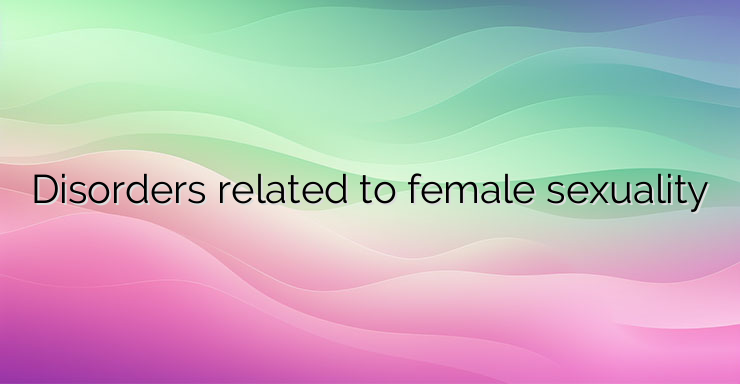Sexuality is an important element of a modern woman’s life. It is a combination of sexual desire and sexual response. External factors, such as interest and attraction to the male sex, emotional state determine sexual desire. The response is a sequence of arousal, plateau, orgasm and resolution. Disorders that are related to sexuality can affect every single element forming sexuality. The development of sexuality is a long process and is determined by a number of factors. During the period of early childhood, a basic element is getting to know one’s own body. Reaching puberty – a period of rapid development of secondary sex drives under the influence of sex hormones, interest in the opposite sex begins to form. The family environment of upbringing and the parental approach to conversations about “sex” are important in shaping its perception. Women are most sexually active between the ages of 30 and 40. As you reach the premenopausal period, this gradually decreases. Another important factor that has a significant impact on sexuality is the state of health. In severe and chronic diseases, it is significantly reduced. An interesting fact is that in patients with tuberculosis, sexuality is increased. Pregnancy is a period associated with significant changes in women’s emotionality and psyche. This definitely has an impact on a woman’s sexual desire. For a large part it is reduced. Sexual disorders may be the result of emotional changes or physiological disorders. 1. Decreased libido – this means decreased sexual desire. This problem occurs significantly more often in women in adulthood. During pregnancy and menopause, this is a natural and common sexual disorder. Decreased desire for sexual intercourse is a leading feature of this condition. As a result, sexual stimulation has no effect on the woman. Female libido is directly related to the emotional state – fatigue and stress lead to its suppression. To help restore sexual desire, it is necessary to find out the cause of this disorder. In young women, it may be related to sexual trauma during childhood and puberty or a wrongly transmitted pattern in the family environment. NEWS_MORE_BOX 2. Lack of orgasm – in a very small percentage of women 5 – 10% there is a real lack of orgasm. Usually sexual desire is preserved, but both disorders can develop simultaneously. Impaired reaching the climax of the sexual act is observed most often in younger women who have recently started having sex. 3. Dyspareunia – this is pain during intercourse. Discomfort and pain may be related to various causes such as the presence of an inflammatory disease of the female genital organs or reduced lubrication during the arousal phase. This complaint is very common in women after giving birth naturally. In the presence of tears,which require suturing, a longer recovery period is required in order to reduce pain during sexual intercourse. 4. Nymphomania – in this sexual disorder, an increased sexual desire is observed. Very often, women have a lack of orgasm, but have obsessive thoughts about having sex. The presence of sexual disorders leads to a deterioration of the lifestyle and affects the relationship between partners. In addition to obstetricians and gynecologists, women are advised to consult a psychologist in the treatment of these disorders. The need for this type of consultation is the fact that most of the violations are related to problems in the psycho-emotional state of the woman.


Leave a Reply